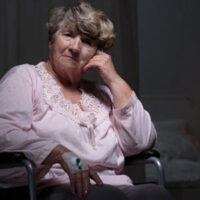Common Kinds of Nursing Home Neglect

According to many, understaffing is at the heart of the nursing home neglect crisis. As many as 90 percent of long-term care facilities are dangerously understaffed. Many facilities operate with skeleton crews, especially during low census periods like weekends and holidays. Additionally, many facilities assign tasks to underqualified workers. For example, patient care techs might perform tasks that licensed vocational nurses should handle.
Other contributing factors to nursing home neglect include the exploding elderly population. Many facilities do not have the space to accommodate a large number of additional residents. So, many facilities are almost constantly being repaired, renovated, or expanded.
If you or a loved one experienced neglect, a Tampa personal injury attorney can do more than obtain compensation for your injuries. A lawyer also obtains justice for these victims. In many cases, that means future residents do not have to suffer through the same experience.
Malnutrition
Since many older people have digestive issues, many nursing homes serve bland food. Such menus contribute to malnutrition. As people age, their senses degrade. Food no longer looks, smells, or tastes good. That’s especially true if the food was bland to begin with.
Nursing homes should use registered dieticians in the kitchen and in the dining room. Someone must ensure that the prepared food is nutritionally appropriate. Additionally, someone must ensure that residents actually eat this food. As mentioned, in understaffed environments, such professional help is often absent or inadequate.
Malnutrition is not just a standalone problem. Frequently, malnutrition makes other medical conditions more serious. Infections are a good example. If the resident is physically weak, the resident is less able to resist staph and other infections.
Bedsores
Pressure ulcers usually develop on bony areas, such as the ankles, hips, knees, and thighs. Bedsores are normally not an issue, even among bedridden people, as long as they rotate in bed every few hours.
Unfortunately, for many nursing home residents, rotating in bed is an impossible task. Many are too weak or too medicated to turn themselves over.
Because of understaffing, there might be no one to turn residents over in bed. Instead of making rounds every two hours, perhaps someone makes rounds every four hours. On a related note, patient care techs and other such professionals might not have the skills to detect bedsores. As a result, the resident’s injuries get worse. If left untreated, pressure ulcers quickly become life threatening.
Falls
As mentioned, many nursing homes are constantly under construction. Also as mentioned, many nursing home residents have dull senses. As a result, they do not avoid construction zones and other dangerous areas. The risk of a fall is quite high.
Nursing home falls do not just cause severe physical injuries. Frequently, residents have pre-existing conditions which exacerbate their injuries. Nursing home falls also trigger emotional injuries. Some fall victims are so afraid of a repeat fall that they isolate themselves. Such isolation weakens their muscles, making them more vulnerable to another fall, and the downward spiral continues.
Rely on Dedicated Lawyers
Generally, where there is a wrong, there is a remedy. For a free consultation with an experienced Tampa nursing home abuse attorney, contact The Matassini Law Firm. You have a limited amount of time to act.
Resource:
pbs.org/newshour/health/most-nursing-homes-are-not-adequately-staffed-new-federal-data-says
https://www.matassinilaw.com/five-types-of-nursing-home-neglect-in-florida/
